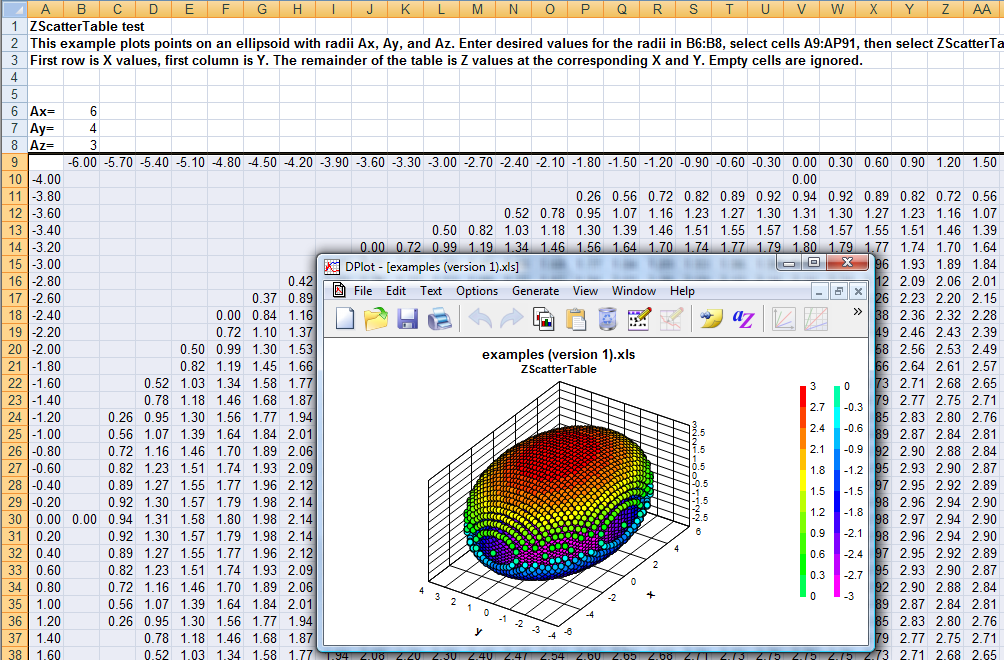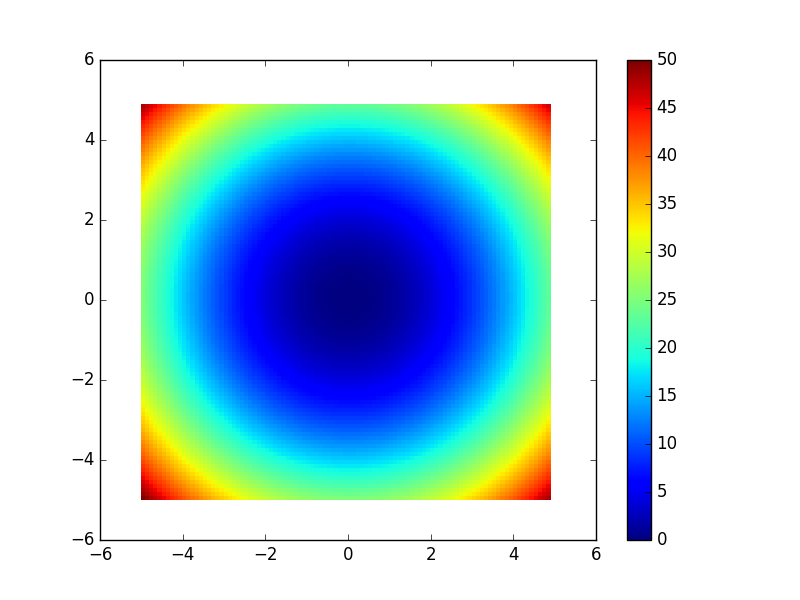Z Plot In Excel
Excel does not really have XYZ scatter charts. See for alternatives. It currently plot points but can be adapted to plot a mesh. Cheers Andy dgs348 wrote: I would like to plot 3D (X,Y,Z) points in excel, similar to and XY Scatter but with a third axis. The surface graph type does not do what I want because it can't plot scaled numerical values on 2 of 3 axis. Does anyone know how I can do this?
Excel Normal Distribution Graph (Table of Contents) Normal Distribution Graph in Excel; How to Calculate Normal Distribution in Excel? How to Make Normal Distribution Graph in Excel? Normal Distribution Graph in Excel. Normal distribution graph in excel is a continuous probability function. It is a common method to find the distribution of data. Unlike a classic XY scatter chart, a 3D scatter plot displays data points on three axes (x, y, and z) in order to show the relationship between three variables. Therefore, it is often called an XYZ plot. Regrettably, there is no way to create a 3D scatter plot in Excel, even in the new version of Excel 2019. Since Excel doesn’t have any built-in solutions to offer, you will have to plot it yourself. That’s why we developed the Chart Creator Add-in, a tool that allows you to build advanced Excel charts in just a few clicks. In this step-by-step tutorial, you will learn how to create a normal distribution bell curve in Excel from the ground up.
How to Find Z Score in Excel – Microsoft Excel includes a large number of statistical formulas, including one that can calculate a Z-score (standard score) directly. You can also calculate Z-scores with a formula.
Step 1: Enter the data
Type the data values for which you want to calculate the default Z-scores in a single column. There is no need to classify them or organize the values in any particular way. Provide titles for the other elements that will be required for the calculation of the Z-score.
Step 2: Calculate the average
Use the average function to calculate the average of the data values. In the cell reserved for the average value, enter the function as = average (interval). Select-Highlight-values to populate the interval values.
You can also access this function in additional two ways:
Clicking the function button in the formula bar and selecting the statistical category in the pop-up box, and then the average of your list, or
Choosing the Formulas tab in the Excel ribbon and click the most Functions button, selecting statistics, and then average pop-up list.
Step 3: Calculate the standard deviation
In the cell reserved for the default deviation value, type the function as = STDEV (interval). Once again, select the cells to be included in the calculation.
In fact, there are four functions available for calculating the standard deviation, which you use depends on the data. The STDEV () function is used for logical sets of samples (True/False) or text in the data range. The STDEVA () function is another set of samples but includes all the text and logical values in your gamma. The STDEVP () calculates the standard deviation of an entire population. Like the STDEV (), it omits logical values or text. STDEVPA, such as STDEVA () includes logical values and text in calculating the standard deviation of a population.
Step 4: Calculate standardized scores
Step 5: Calculate Z scores with a function
Related posts:
Z Plot In Excel
- 4Workflow
Brief
X Y Z Plot In Excel
The P/Z plot is a plot of P/z versus Reservoir cumulative gas production, Gp.
The interpretation technique is fitting the data points with the straight line to estimate GIIP.
The P/Z plot is based on the Gas Material Balance equation.
Math & Physics
Applying Real GasEOS at reservoir conditions:
Plot Z Scores In Excel
- (1)
Applying Real GasEOS at standard conditions:
- (2)
Dividing eq. 2 by eq. 1 and rearranging:
- (3)
Applying eq. 3 for initial conditions and for any point in time:

Applying eq. 3 for any point in time:
Therefore at any time:
Or:
Thus a plot of P/z vs cumulative produced gas is a straight line intersecting X axis at GIIP.
Discussion
P/Z plot is a part of the Reservoir Management workflow in the E&P Portal used to estimate Reservoirs GIIP and recovery.
Example 1. Multiple Reservoirs on the same P/Z plot in the E&P Portal
Gas Flowing Material Balance is the more advanced tool to determine the Reservoirs GIIP and recovery as well as Well's EUR and JD.
Workflow
- Upload the data required
- Go to the Reservoir Management -> Performance Plots
- Select the Reservoirs you want to see and the Data range and click 'Search'
- Scroll down the Performance Plots to see the P/Z plot
Data Required
- Create Fieldhere
- Upload Monthly Measureshere
- Create or Upload Reservoirshere
- Input the Reservoirs GIIP here
- Create or Upload PVT (SG, Pi, Ti) here
In case you need to calculate the Monthly Measures from the Daily Measures:

- Calculate the Monthly Measures using Monthly Measures Calculator
See also
Gas Flowing Material Balance
Gas Material Balance
Nomenclature
- = gas initially in place, scf
- = cumulative gas produced, scf
- = reservoir pressure (changing), psia
- = initial reservoir pressure (constant), psia
- = pressure at standard conditions, psia
- = initial reservoir temperature (constant), °R
- = reservoir temperature (constant), °R
- = temperature at standard conditions (constant), °R
- = volume of gas in reservoir converted to standard conditions (changing), scf
- = reservoir volume (constant), ft3
- = gas compressibility factor (changing), dimensionless
- = initial gas compressibility factor (constant), dimensionless